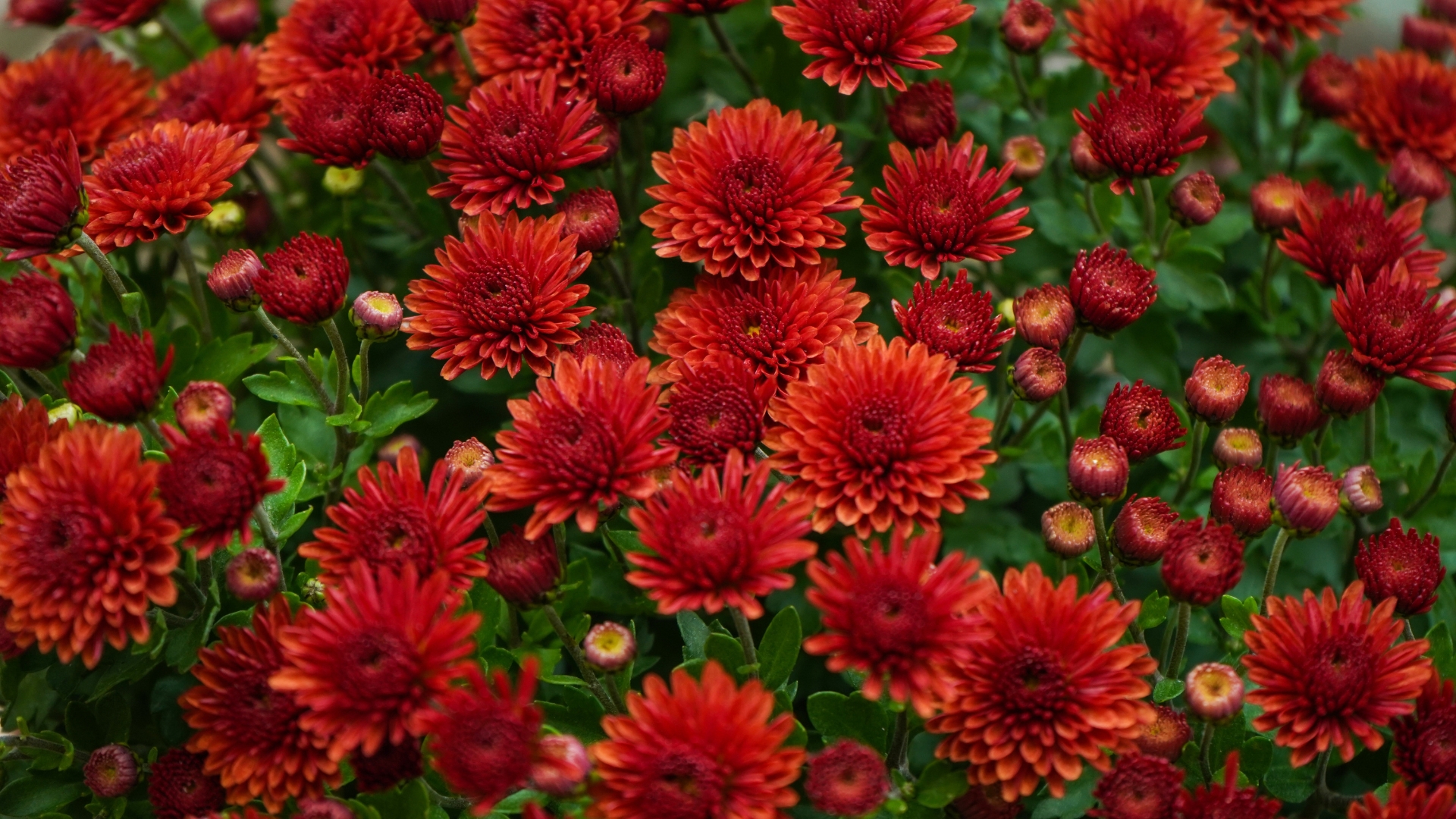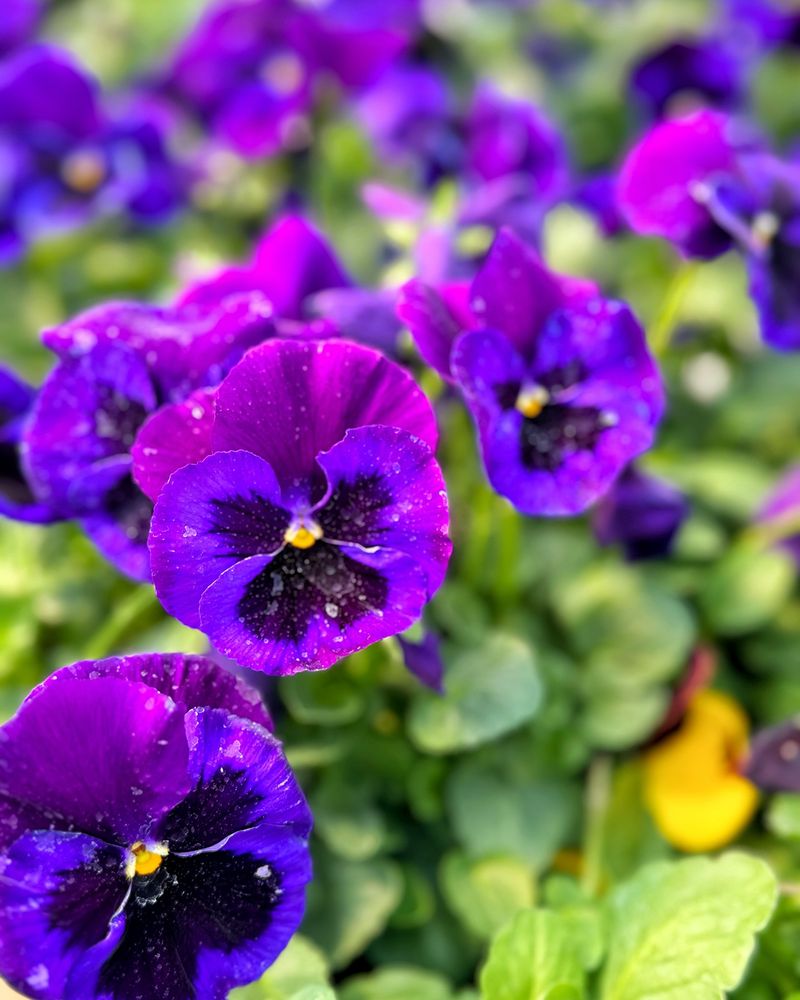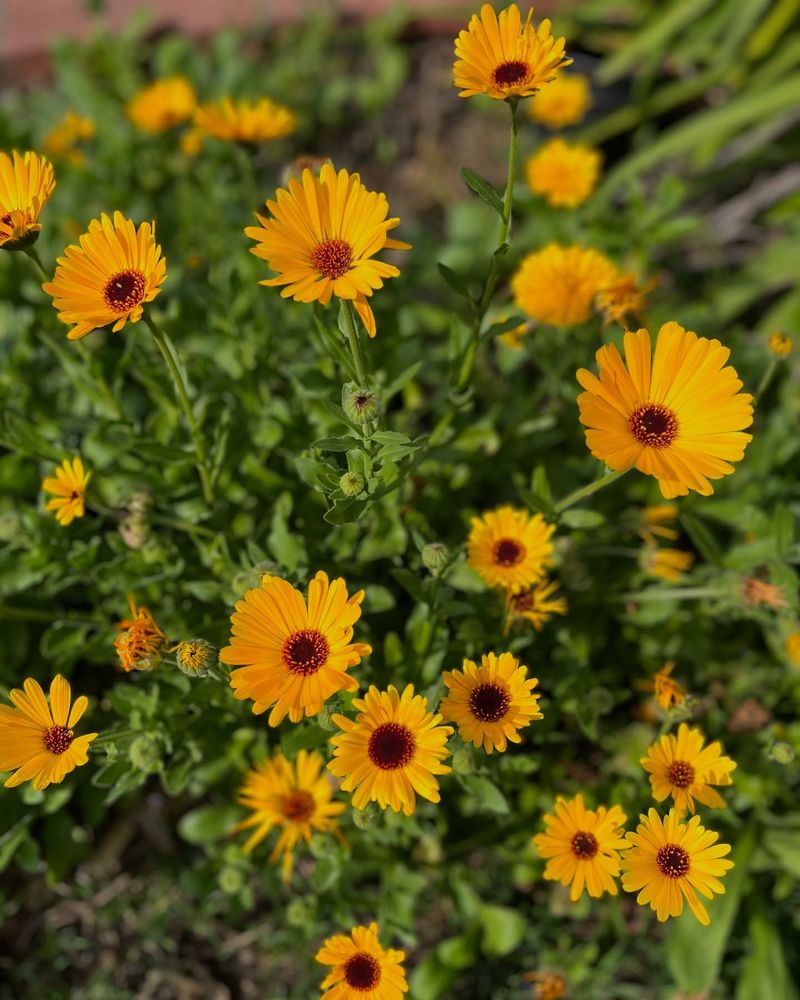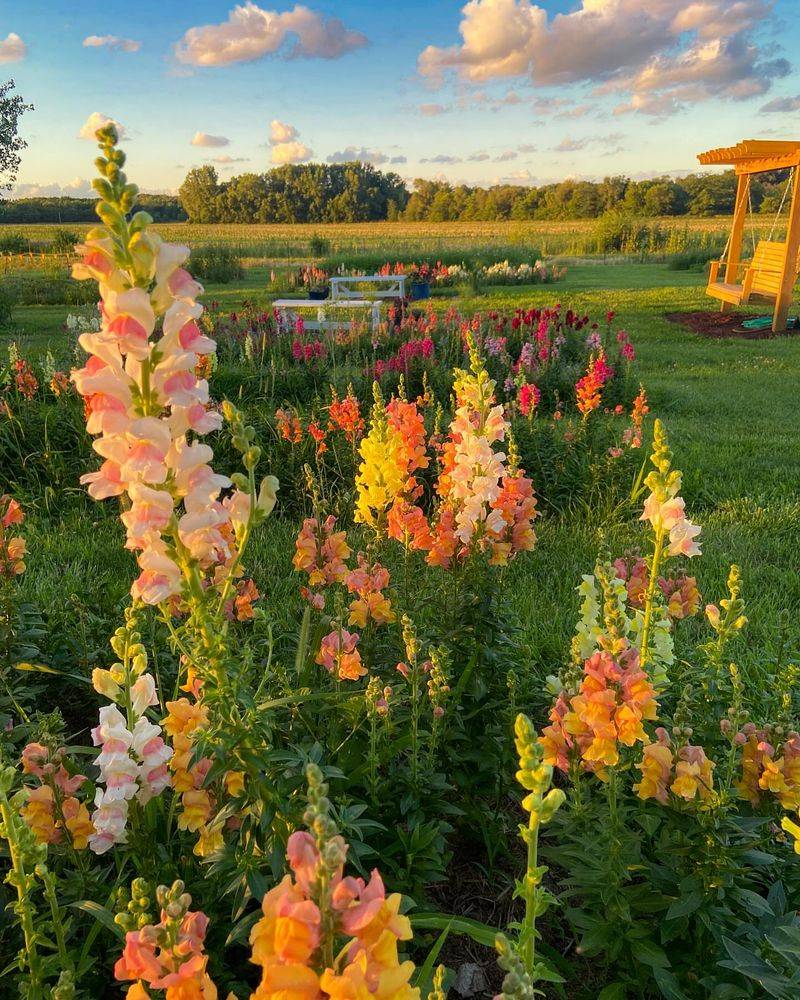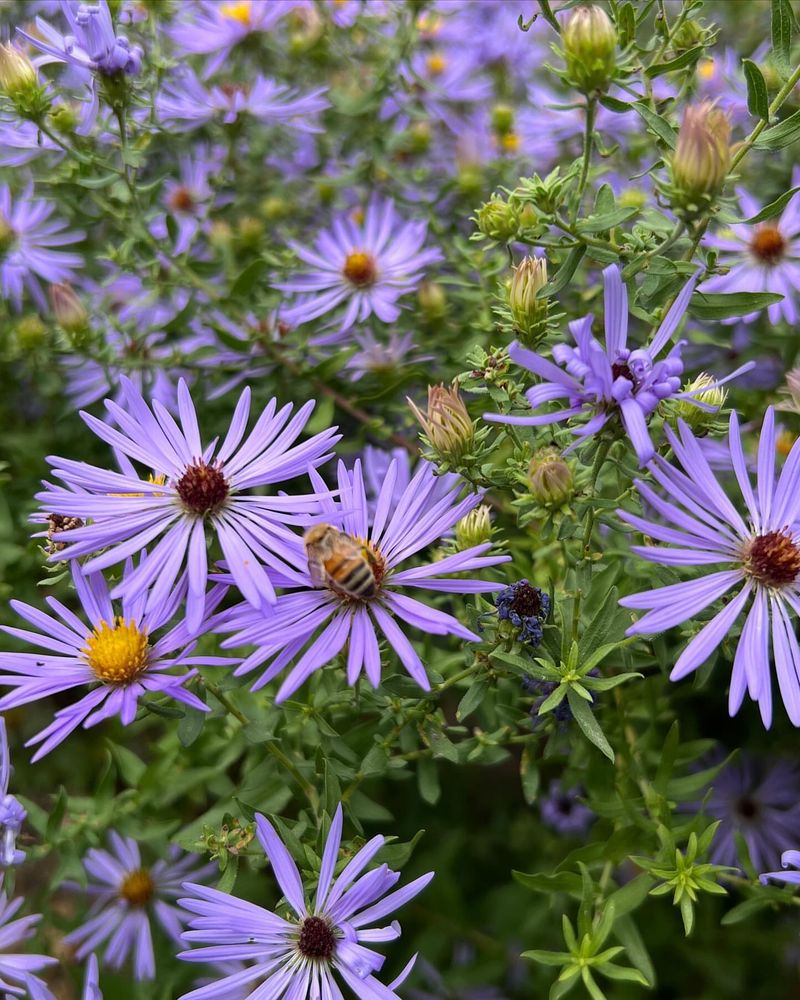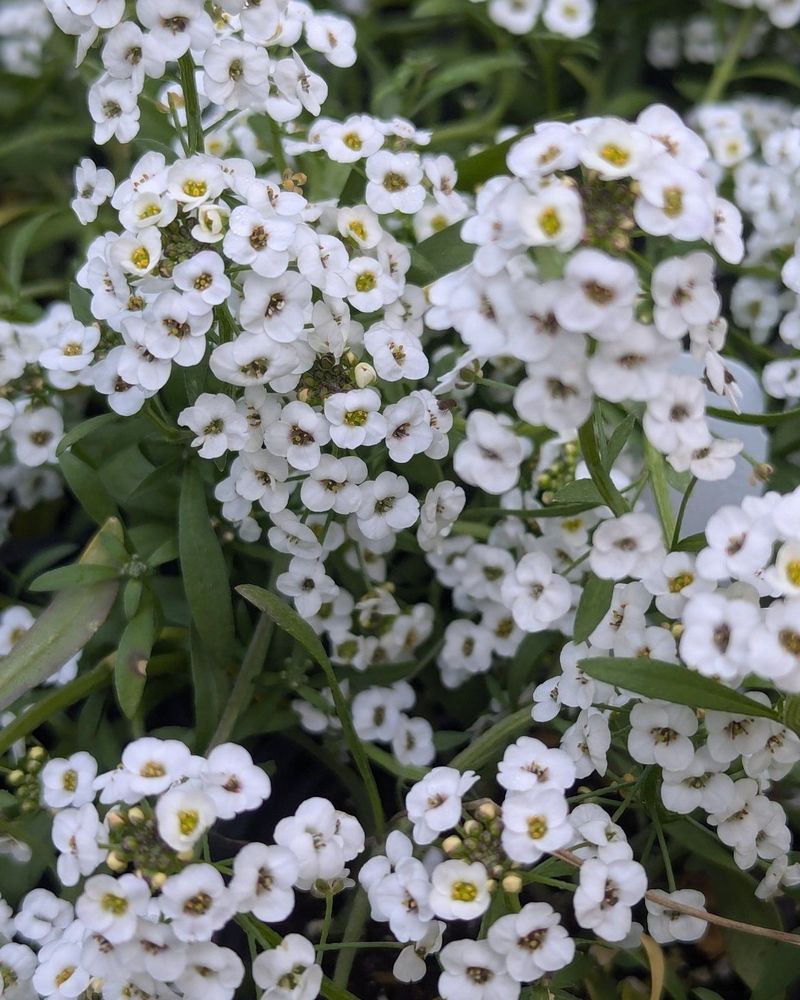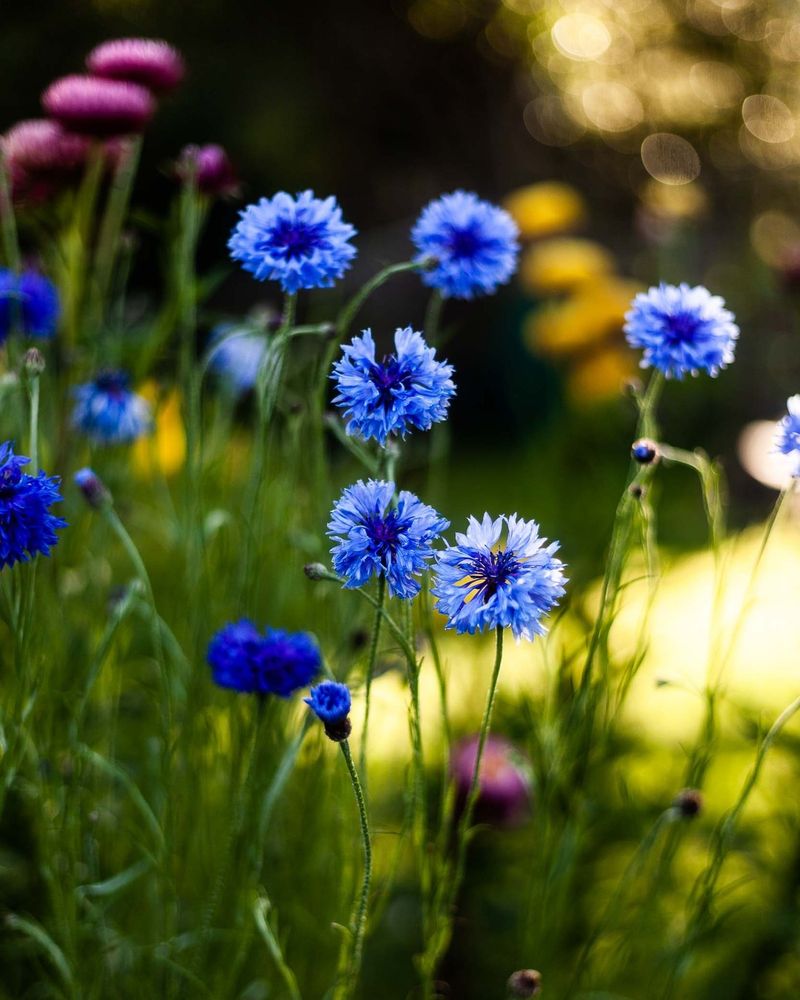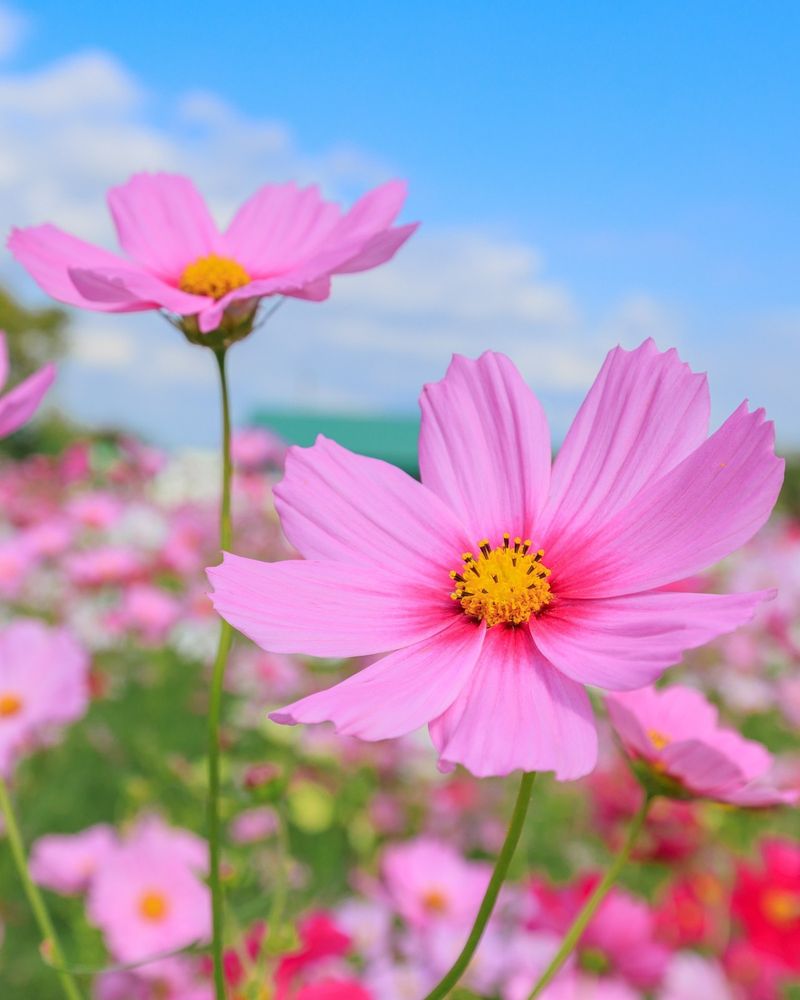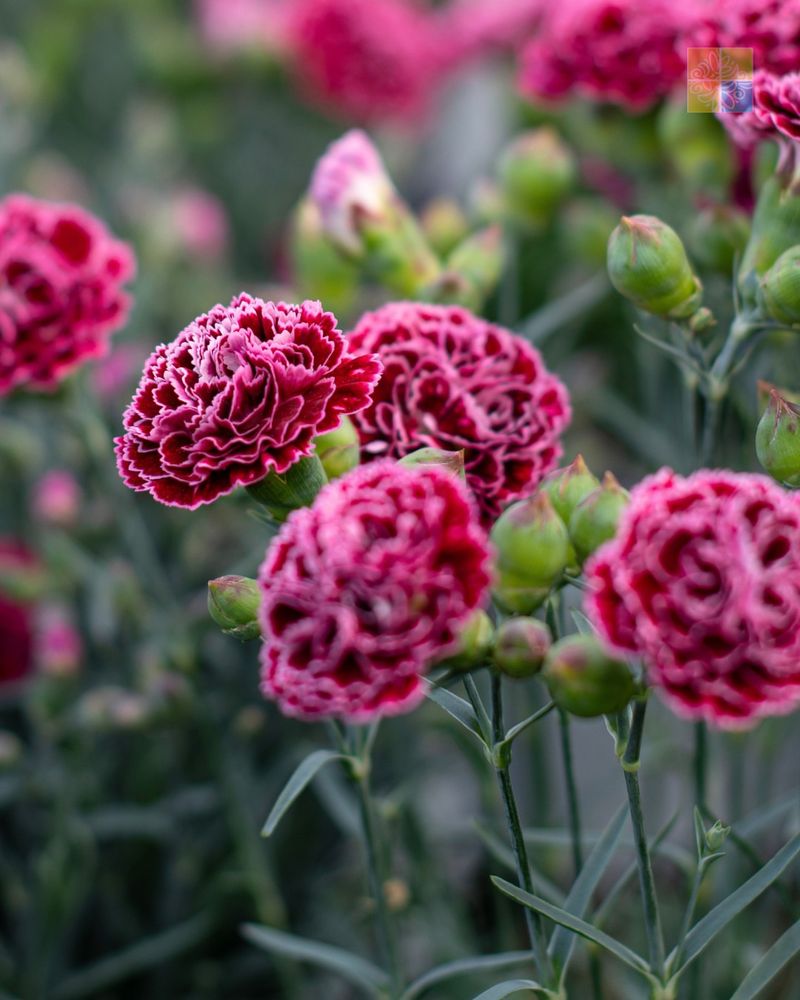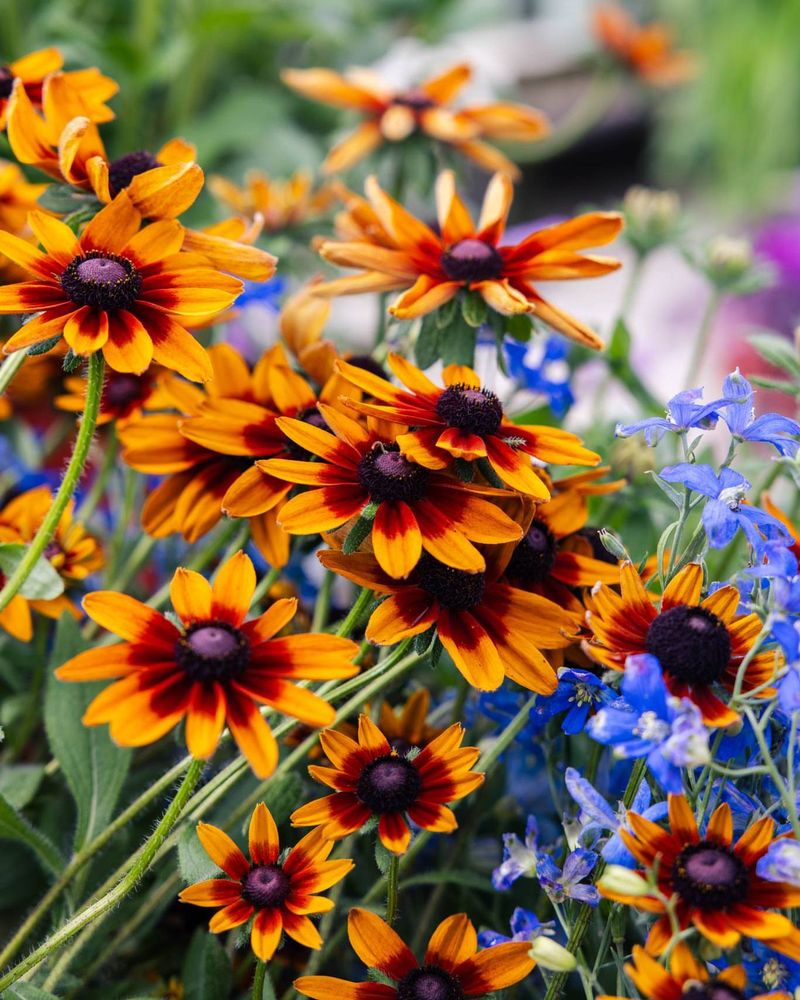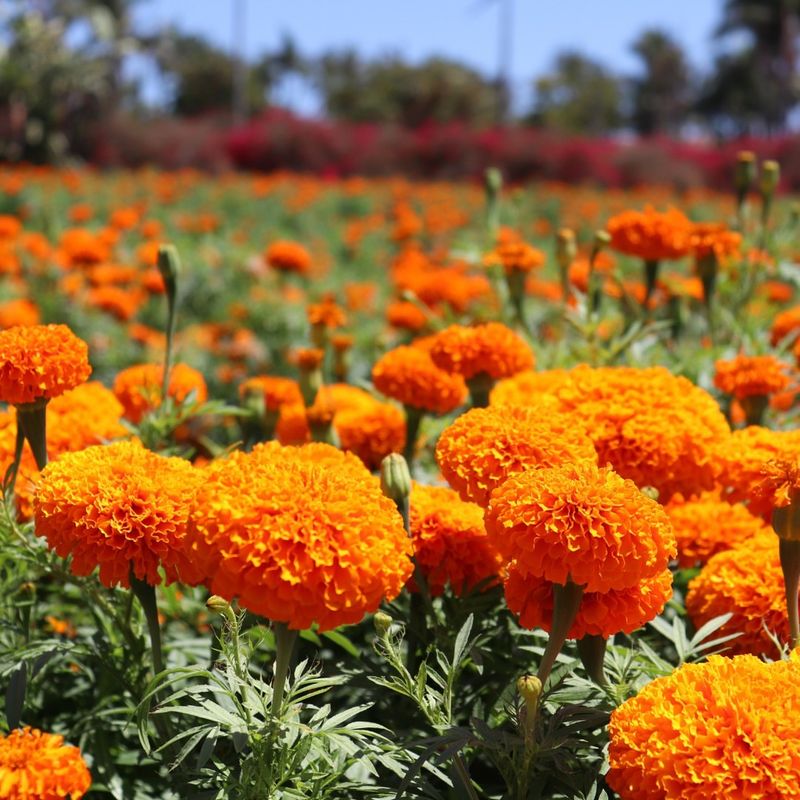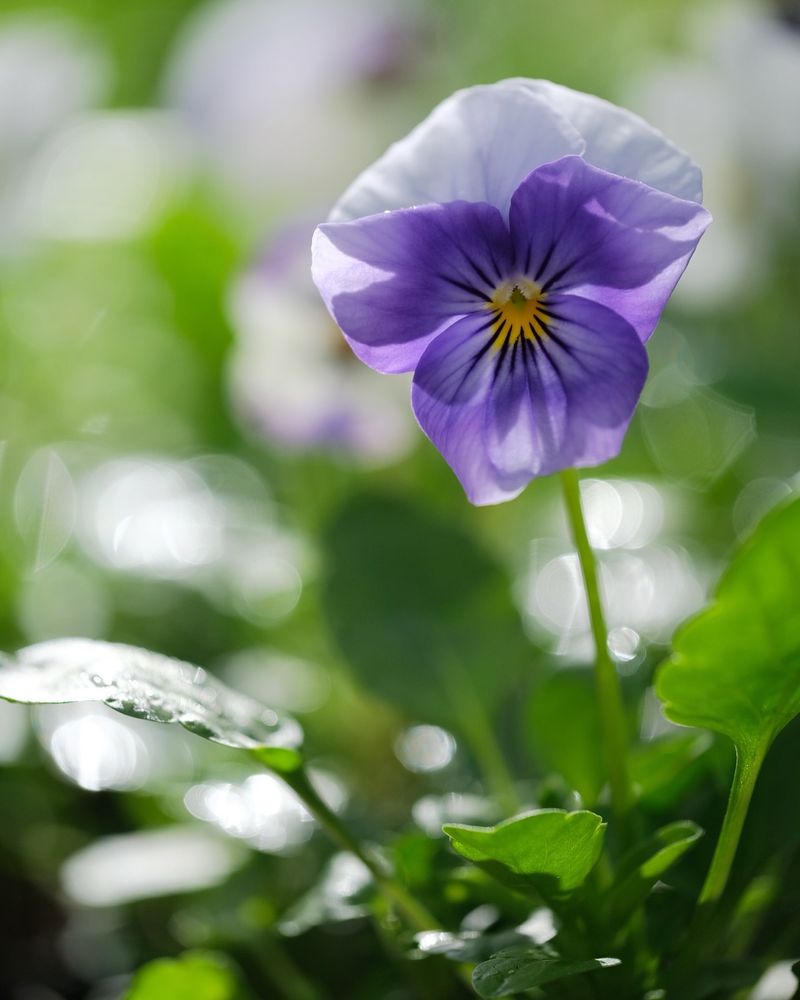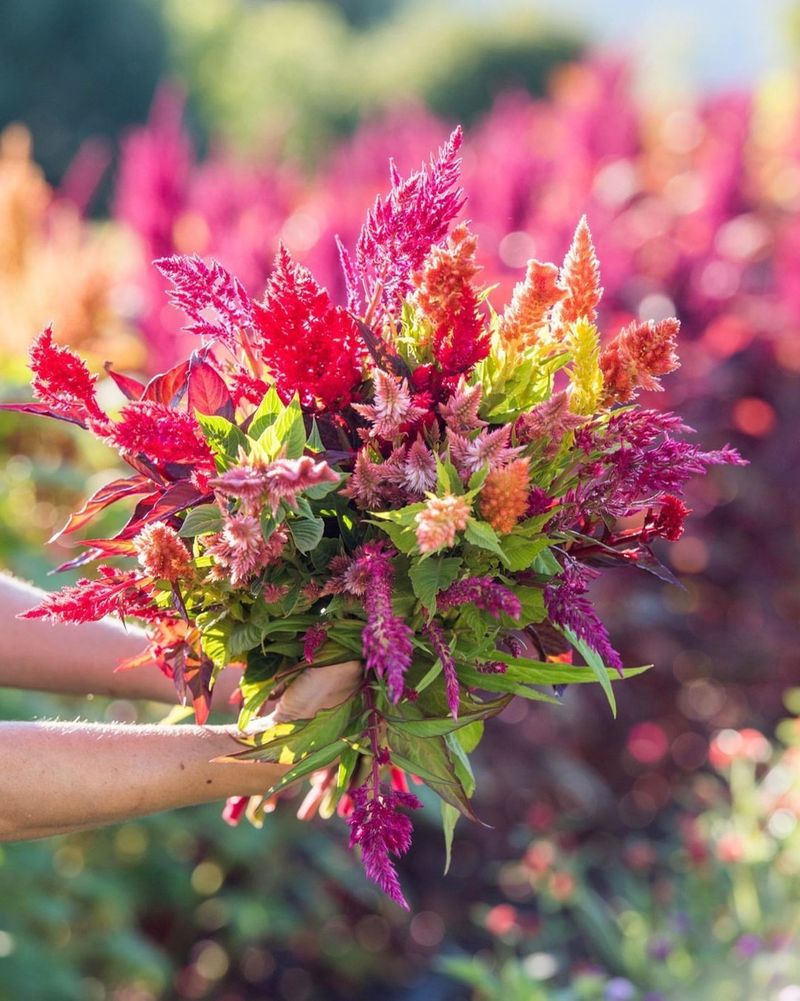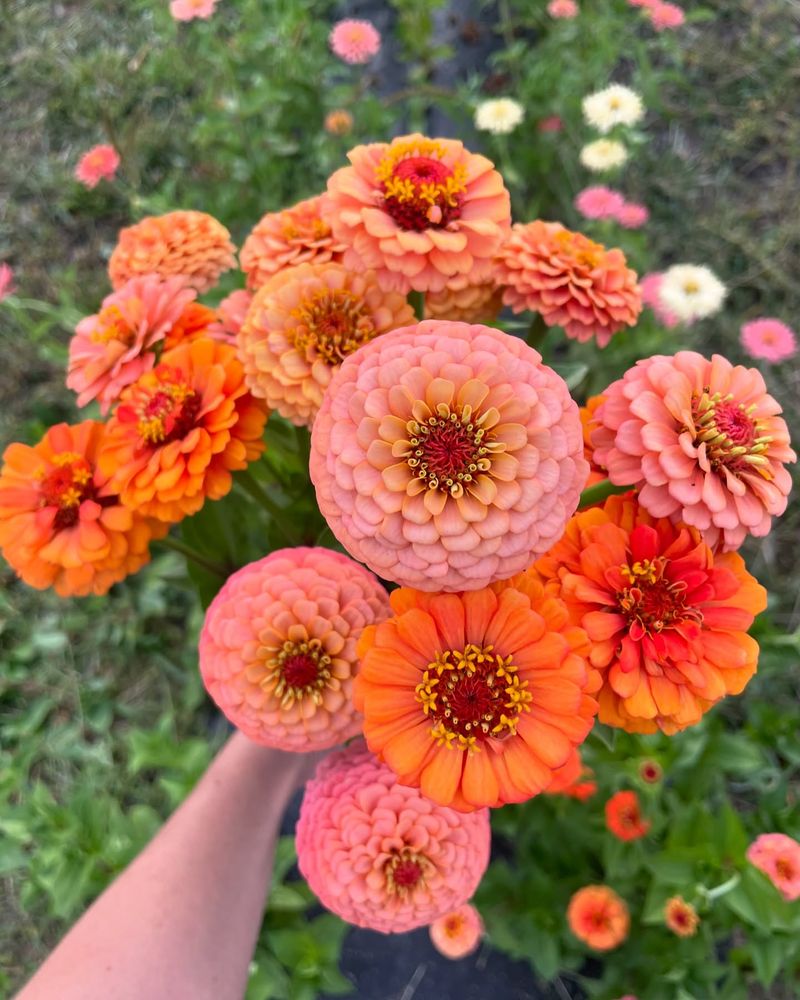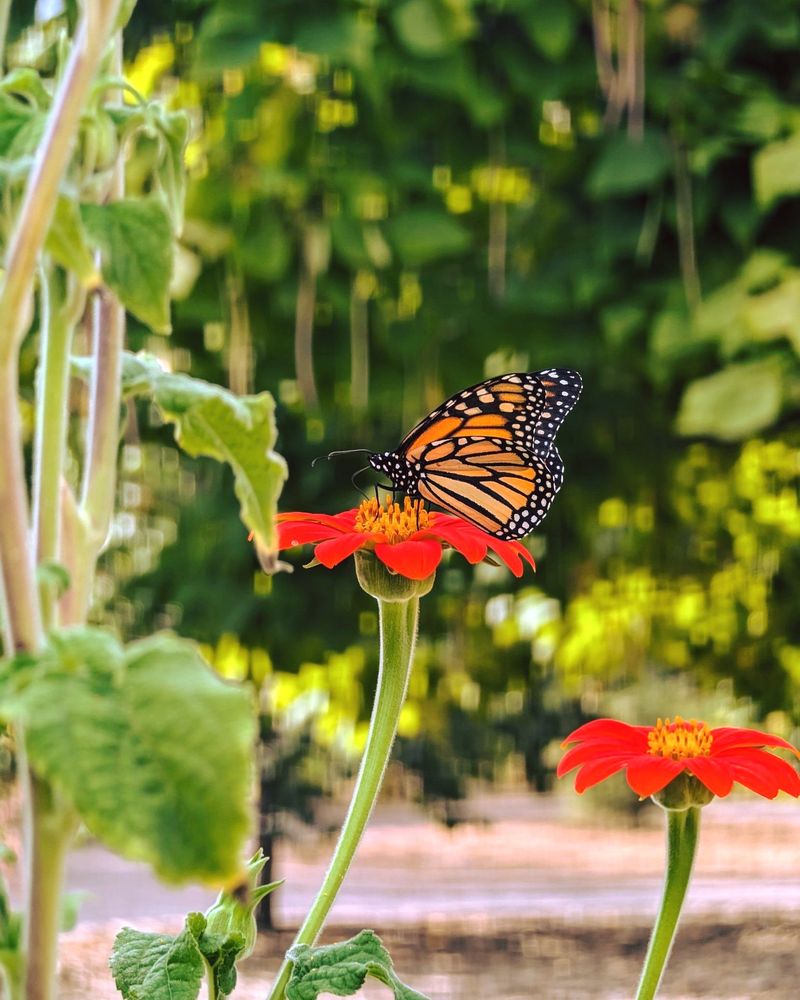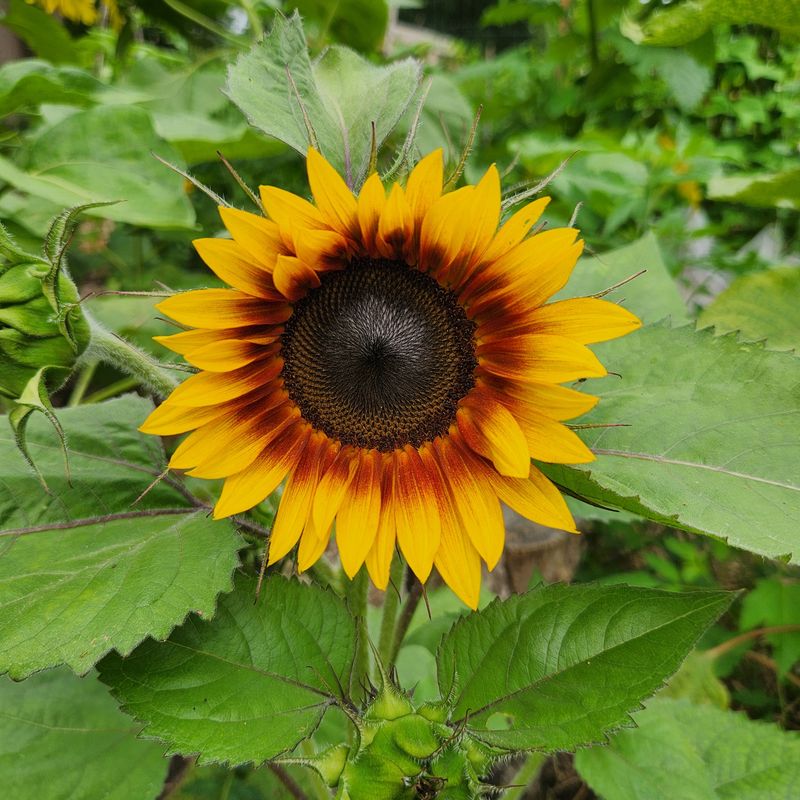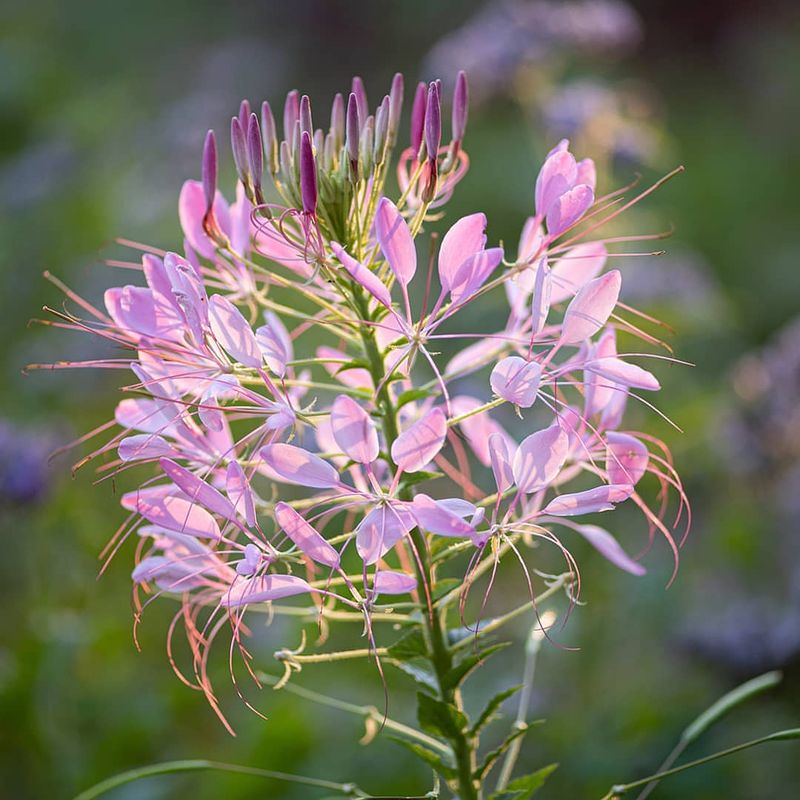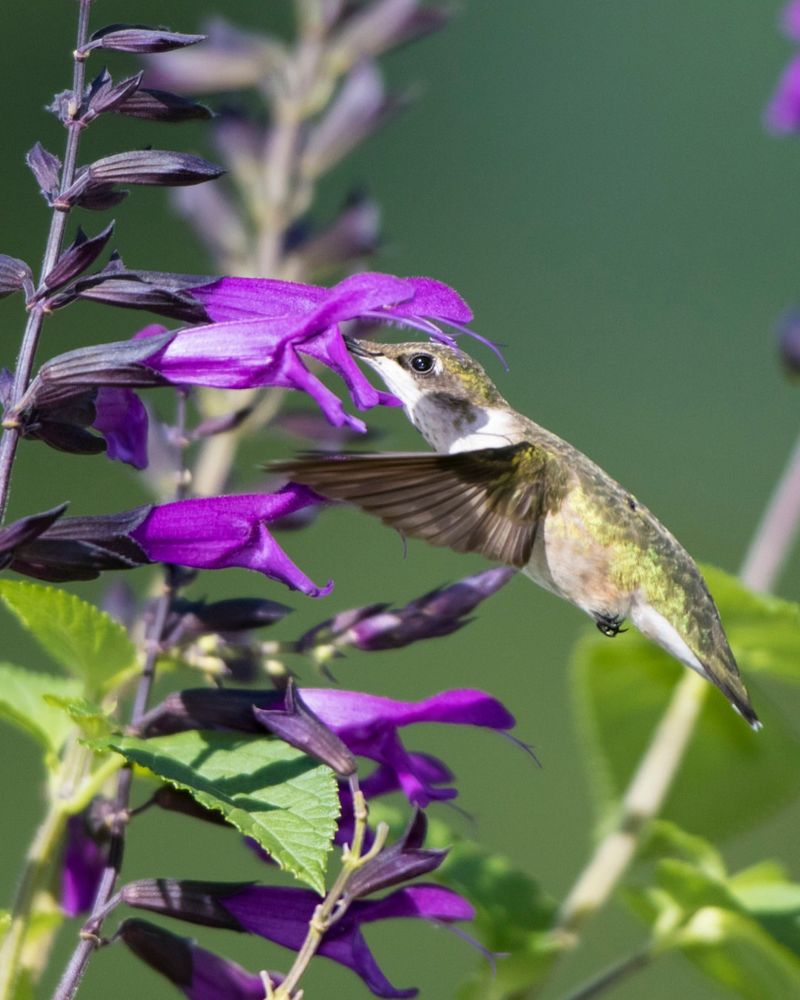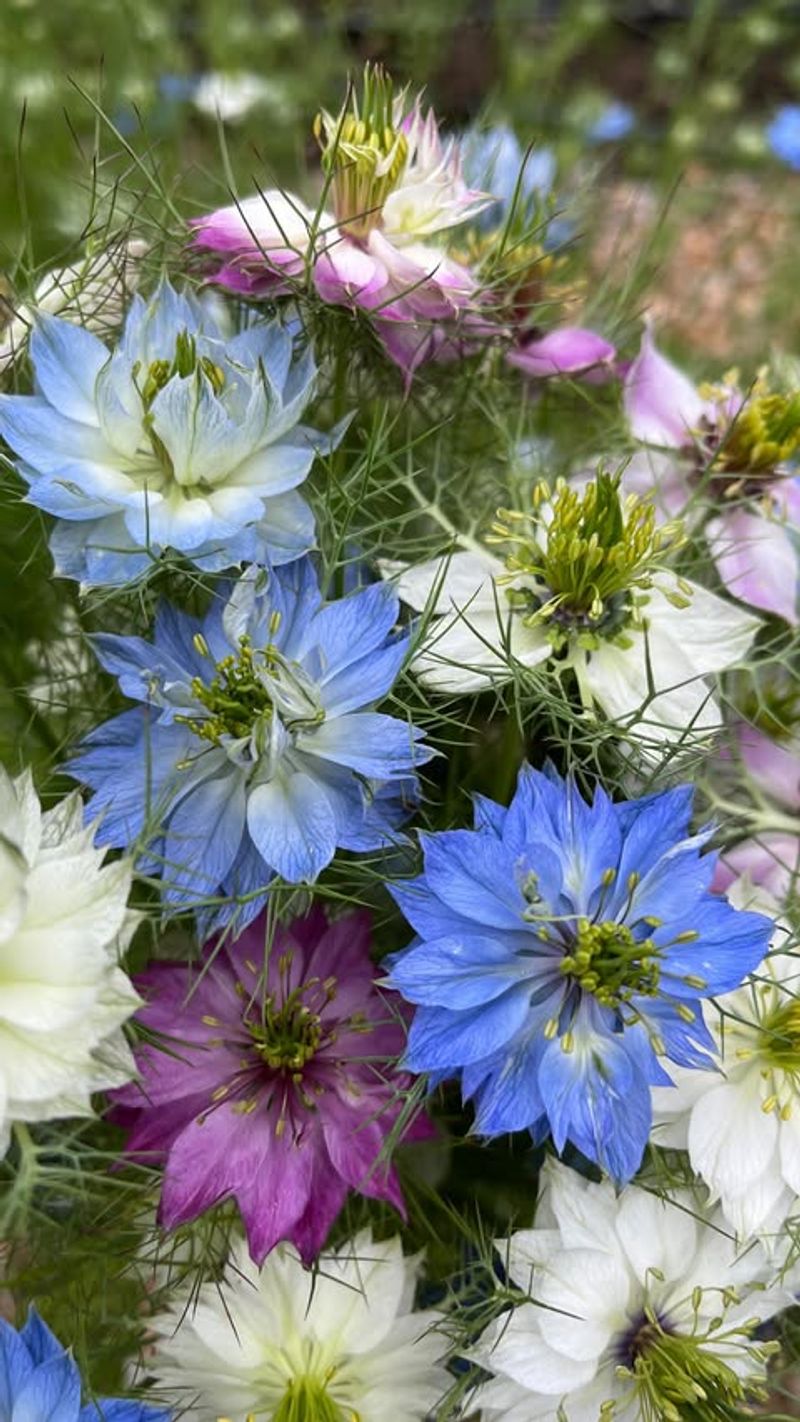It’s easy to forget that some of fall’s best flowers actually get their start in the middle of summer. I missed the timing once and kicked myself all autumn watching bare spots where blooms should’ve been.
A little planning now means a big payoff later—with rich colors and strong plants that last well into the cooler months.
The best part? Most of these are simple to grow if you know when to get going.
1. Chrysanthemums
Start seeds indoors 8-10 weeks before the last frost date for the best autumn display. These classic fall favorites need well-draining soil to prevent root rot.
Water at the base rather than overhead to keep foliage dry. Pinch back growth until midsummer to encourage bushier plants with more blooms. Hardy in zones 5-9, they’ll return year after year with proper care.
2. Pansies
Surprisingly tough despite their delicate appearance, pansies thrive when summer-seeded for fall blooming. Their cheerful faces add instant charm to autumn gardens and containers.
Sow seeds in a partially shaded spot and keep soil consistently moist. They prefer cooler temperatures, making them perfect for fall gardens. Feed with half-strength fertilizer monthly for continuous blooming through mild winters.
3. Calendula
Often called pot marigold, calendula brings sunshine to autumn gardens with minimal effort. Direct sow in July for an abundant fall harvest of edible, medicinal blooms.
The vibrant orange and yellow flowers persist through light frosts. Deadhead regularly to extend blooming season well into autumn. These self-seeding annuals attract beneficial insects while repelling many garden pests naturally.
4. Snapdragons
Mid-summer seeding gives snapdragons the perfect timeline for spectacular autumn displays. Their tall spikes of dragon-mouth blooms add vertical interest to fall gardens.
Germinate seeds indoors where temperatures can be controlled for best results. Once established, they’re surprisingly frost-tolerant and will often bloom until hard freeze. Available in nearly every color except blue, they make excellent cut flowers for autumn arrangements.
5. Asters
Native asters provide essential late-season nectar for butterflies and bees. Their daisy-like flowers in purples, pinks and whites create a starry display in the autumn garden.
Start seeds 6-8 weeks before transplanting outdoors in midsummer. Pinch back stems once in early summer to encourage branching. Most varieties are perennial in zones 3-8, forming larger clumps each year with minimal care.
6. Sweet Alyssum
This low-growing carpet of tiny flowers offers a honey-like fragrance that intensifies in cool autumn air. Direct sow in July for a fresh batch of fall blooms.
Tolerates light frost and continues flowering well into autumn in most regions. The white, purple or pink blooms attract beneficial insects to your garden. Perfect for edging beds or spilling over container edges, creating a frothy accent to fall plantings.
7. Cornflowers
Also known as bachelor’s buttons, these easy-to-grow annuals produce papery blooms perfect for dried arrangements. Sow directly in the garden in July for autumn flowering.
The classic blue varieties complement traditional fall colors beautifully. Deadhead regularly to prevent self-seeding and extend blooming period. Their drought tolerance makes them ideal for gardeners in drier regions looking for reliable autumn color.
8. Cosmos
Late summer seedlings produce the most spectacular autumn display of these daisy-like flowers. Their feathery foliage adds texture while the blooms dance above on wiry stems.
No need for rich soil—cosmos actually bloom better in poor conditions. Choose shorter varieties if your garden experiences strong autumn winds. The open-faced flowers attract butterflies and provide seeds for birds as they fade.
9. Dianthus
Summer-sown dianthus establishes strong root systems before winter, ensuring spectacular spring and fall blooms. Their spicy clove fragrance intensifies in cooler autumn temperatures.
Choose perennial varieties for years of reliable color in zones 3-9. Their compact growth habit makes them perfect for front-of-border plantings or container gardens. Many varieties feature unique patterned petals that look hand-painted by nature.
10. Rudbeckia
Black-eyed Susans sown in early summer develop into robust plants with abundant autumn blooms. Their golden petals surrounding dark centers perfectly complement fall’s color palette.
Most varieties self-seed readily, creating naturalized areas with minimal effort. Leave seed heads intact after flowering for winter interest and bird food. Perennial types establish quickly from summer seeding and return reliably for years.
11. Nasturtiums
Direct sow nasturtium seeds in July for vibrant autumn blooms in fiery oranges, reds and yellows. Both flowers and peppery leaves are edible, adding a gourmet touch to fall salads.
Trailing varieties cascade beautifully from containers and hanging baskets. They prefer poorer soil—too much fertility produces lush foliage but fewer blooms. Their slightly succulent nature helps them withstand light frosts better than many annuals.
12. Marigolds
A fresh batch of marigolds sown in midsummer provides brilliant autumn color until frost. Their spicy scent naturally repels many garden pests, protecting neighboring plants.
Choose African varieties for large pom-pom blooms or French types for more delicate flowers. The gold, orange and bronze hues complement classic autumn decorations perfectly. Deadheading extends blooming season and prevents unwanted self-seeding.
13. Violas
Smaller cousins to pansies, violas offer more abundant blooming in cool autumn temperatures. Summer seeding gives them the perfect head start for fall displays.
Their diminutive faces look up from the garden like tiny works of art. More cold-hardy than pansies, they often survive winter to bloom again in spring. Plant in masses for the most dramatic effect or use as charming edging plants.
14. Celosia
Summer-sown celosia produces dramatic plumes or crested blooms that dry beautifully for autumn decorations. Their fiery colors—burgundy, orange, and gold—epitomize fall’s rich palette.
Plume varieties add vertical interest while crested types resemble coral or brain-like formations. They thrive in hot weather but continue blooming well into autumn. Excellent as fresh or dried cut flowers for seasonal arrangements.
15. Zinnias
A July sowing of zinnia seeds produces fresh, vibrant blooms for autumn gardens and bouquets. Their wide color range includes fall favorites like burgundy, orange and gold.
Choose dahlia-flowered varieties for the most impressive blooms. Their strong stems hold up well to autumn rains and winds. One of the easiest flowers to grow from seed, making them perfect for gardeners of all skill levels.
16. Tithonia
Mexican sunflower seeds planted in early summer grow into impressive 5-6 foot plants by autumn. Their vibrant orange-red blooms attract monarchs and other butterflies preparing for migration.
The velvety green foliage provides a beautiful backdrop for the fiery flowers. Heat and drought tolerant once established, they bloom until frost without deadheading. Their height makes them perfect for the back of borders or as a seasonal privacy screen.
17. Helianthus
Summer-sown sunflowers reach their peak as autumn approaches, with varieties ranging from giant single stems to multi-branched bouquet types. Their cheerful faces follow the sun across the sky.
Choose pollenless varieties for cut flowers or traditional types to feed birds. Dwarf varieties work well in containers while mammoth types create dramatic focal points. Some perennial varieties return year after year in zones 4-9.
18. Cleome
Also called spider flower, cleome sown in early summer produces exotic-looking blooms that persist well into fall. Their unique spider-like petals create architectural interest in autumn gardens.
The tall stems may require staking in windy locations but reward with months of blooms. Self-seeds readily but not invasively in most gardens. Their slight fragrance intensifies in evening, attracting beneficial night pollinators.
19. Salvia
Summer-sown annual salvia varieties provide rich color spikes that intensify as temperatures cool. Their nectar-rich blooms attract hummingbirds and butterflies well into autumn.
Available in jewel tones of blue, purple and red that complement fall’s golden hues. Drought tolerant once established, making them low-maintenance autumn performers. Perennial varieties planted from summer seed will establish before winter for years of fall color.
20. Nigella
Love-in-a-mist produces delicate blue, pink or white flowers followed by decorative seed pods perfect for dried arrangements. Direct sow in July for autumn flowering and ornamental seedpods.
The feathery foliage adds textural interest to fall gardens. After flowering, the lantern-like seed pods provide months of additional interest. Self-seeds gently without becoming invasive, creating naturalized drifts over time.

